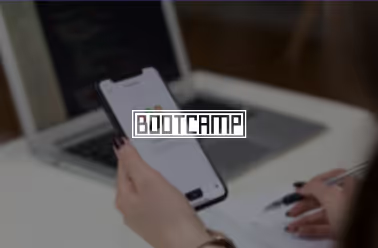Ecommerce UX Design That Boosts Sales
Turn window‑shoppers into loyal customers. We combine research, psychology and beautiful execution to remove friction, build trust and help people buy with confidence.




























































What Sets Us Apart
We don’t just make storefronts look good — we solve real business problems. Every design decision is grounded in user research and tied to measurable outcomes like conversion rate and average order value.
Move from concept to prototype in weeks, not months. Our iterative process gets you to market quickly without cutting corners, so you can start learning from real customers sooner.
We create foundations that scale. From MVPs to enterprise‑grade ecommerce platforms, our systems grow with your catalogue, traffic and evolving customer needs.
How We Approach Ecommerce UX Design
We start by uncovering what shoppers actually need, not what you think they need. Through analytics reviews, stakeholder interviews and user research we identify pain points and opportunities:
- Conversion‑funnel analysis & competitor benchmarking
- Customer interviews & behavioural research
- Flow mapping & pain‑point identification
- Strategic positioning & opportunity assessment
We turn complex catalogues and checkout processes into simple, elegant experiences. Our designs guide customers naturally from discovery to purchase while meeting your business goals:
- Information architecture & menu design
- Search, filtering & product discovery
- Wireframing & interaction design
- Prototyping & concept validation
- Accessible design & accessibility
We craft visually distinct interfaces that feel like your brand. Our design systems ensure consistency across all touchpoints and adapt as your store grows:
- Visual identity & brand application
- Component libraries & design systems
- High‑fidelity designs & specifications
- Motion & micro‑interaction design

Our Ecommerce Design Process
- Stakeholder alignment workshops
- Analytics review & market analysis
- Technical constraints assessment
- Success‑metric definition
- Information architecture
- User‑flow optimisation
- Interactive prototype development
- Usability testing & iteration
- Design system creation
- High‑fidelity design completion
- Developer handoff & documentation
- Quality‑assurance support
Our case studies

Digitizing a 40-year retail brand into a fast, buyer-friendly storefront
Mirror the high-touch in-store experience across web and mobile while improving product discovery and reducing drop-offs.
- Reworked search, comparison, and filters for faster decisions
- Surfaced value-adds (2-hour delivery, doorstep services) inside cart to reduce price-driven churn
- Broadened perception “beyond mobiles” to lift ticket size
DIY Agent setup, run and insights experience with hyper-short time to value. Featurely UX is an case-study in design patterns for AI agents without making it a nightmare for users
- Reworked search, comparison, and filters for faster decisions

Reducing delivery anxiety and support load with a cleaner consumer experience
Recipients lacked a single place to manage parcels; support queries were costly.
Recipients lacked a single place to manage parcels; support queries were costly.
- Unified tracking and self-serve options (reschedule, cancel, raise issues)
- Clarity-first mobile flows that reduce confusion
1M+ downloads and 4.3-star App Store rating highlighted post-launch.
- Unified tracking and self-serve options (reschedule, cancel, raise issues)

Sales tooling that helps teams sell more trips, faster
Feature-bloated tools slowed consultants; target was to move from $38k to $50k sales per consultant per month.
Feature-bloated tools slowed consultants; target was to move from $38k to $50k sales per consultant per month.
- Rebuilt itinerary planner to compress hours of work into minutes
- Structured product data for speed and clarity
- Rebuilt itinerary planner to compress hours of work into minutes
Our Tools & Methods
 FigmaCollaborative design and prototyping
FigmaCollaborative design and prototyping FigJamWorkshops and ideation sessions
FigJamWorkshops and ideation sessions PrincipleAdvanced interaction design
PrincipleAdvanced interaction design MazeUser testing and validation
MazeUser testing and validation NotionDocumentation and project management
NotionDocumentation and project management
- Design sprintsRapid validation of concepts
- Customer interviewsDeep qualitative insights
- Usability testingValidation and optimisation
- Analytics reviewData‑driven decisions
- A/B testingPerformance optimisation
Why Choose Parallel for Ecommerce UX Design
With over a decade of experience, we’ve designed for fashion retailers, grocery services, marketplaces and logistics. This breadth gives us insight into what works across categories.
We tie every decision back to metrics. Research from the Baymard Institute shows that around 70 % of shopping carts on the web are abandoned and that complicated checkouts are a main causeshopify.com. By improving the checkout flow alone, large ecommerce sites can boost conversion rates by 35 %shopify.com. Our work focuses on reducing friction and helping you capture that lost revenue.
Our SaaS clients see average improvements of:
- 45% increase in user activation rates
- 35% reduction in churn within 90 days
- 60% improvement in feature adoption
- 25% increase in trial-to-paid conversion
We build reusable components and guidelines so your store remains consistent as you add new products, features and regions.
We’ve been featured around the world


FAQs


















